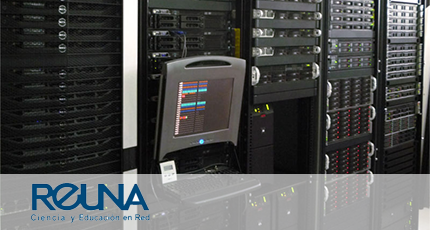Cases & Voices
- María José López Pourailly
Researchers from the most southern country in the world are part of the ATLAS experiment
 (By: Carolina Muñoz, REUNA) Today cutting-edge research is only possible through collaboration by sharing human and material resources to generate new knowledge. Many of the major international scientific projects generate such amount of data that it would be impossible for a single institution to process them within a reasonable time. Facing this scenario, the logical solution has been the integration several smaller institutions into a network where they share their resources through a mutual collaboration.
(By: Carolina Muñoz, REUNA) Today cutting-edge research is only possible through collaboration by sharing human and material resources to generate new knowledge. Many of the major international scientific projects generate such amount of data that it would be impossible for a single institution to process them within a reasonable time. Facing this scenario, the logical solution has been the integration several smaller institutions into a network where they share their resources through a mutual collaboration.
The Science and Technology Center of Valparaíso (CCTVal) of the Technical University Federico Santa María (UTFSM), is part of international initiatives of great importance like the ATLAS project at CERN in Switzerland. In addition, the Center collaborates with world-class centers such as NASA, the Jefferson Laboratory and the Brookhaven National Laboratory in USA.
"Since 2008 a group of physicists from CCTVal has participated in the ATLAS experiment (which in collaboration with the CMS project discovered the Higgs boson), and our cluster assists in the processing of their data. For all of this, we require not only very fast computing, but also high-speed connectivity to CERN, to transfer the data over here, process it and send the results back," explains Yuri Ivanov, Doctor of Physics and researcher at CCTVal.
"ATLAS produces about a petabyte of data every six months (which equals one thousand terabyte disks). The data cannot be processed in a single data center, so it is necessary to distribute it among 300 organizations, each one with its own cluster. The computing system is called Grid and it includes colleges and universities from around the world," added Ivanov.
In order to participate in this project, CCTVal had to go through a rigorous evaluation process after which CERN awarded its cluster with the “Tier-2” certification. CCTVal was the first in Latin American center that obtained this clasification.
This category is related to the storage and processing capabilities of so-called information resource centers of the LHC Computing Grid (LCG). In this network, CERN has the "Tier-0" classification, where the initial processing of the data from the Large Hadron Collider (LHC) is performed. After the processing of the data, the information is distributed to several “Tier-1” centers that allow the access to "Tier-2" data centers.
The CCTVal has currently 700 nucleons (cores) assigned to its cluster for data and research analysis in medicine, astronomy, biology, finance, education and oceanography, among others. "In total we have over 200 local users and about 50 other Chilean universities that use our services. At any given time, our cluster is processing between 300 and 400 tasks required by researchers," explains Dr. Ivanov.
All these computing resources could not be maximized without the adequate network capacity. "I do not think it would be possible to meet all the requirements of CERN effectively and safely without REUNA. For us, REUNA is a very valuable partner. And besides, it is recognized by the (IGTF) international Grid system, as the only accredited entity in Chile to deliver Grid certificates.”
Currently, the CCTVal is connected to the backbone of REUNA and from there to the international academic networks.
For more information please visit:
- CCTVal http://www.cctval.cl/
- UTFSM http://www.usm.cl/
- REUNA http://www.reuna.cl/
- ATLAS http://atlas.cern/




